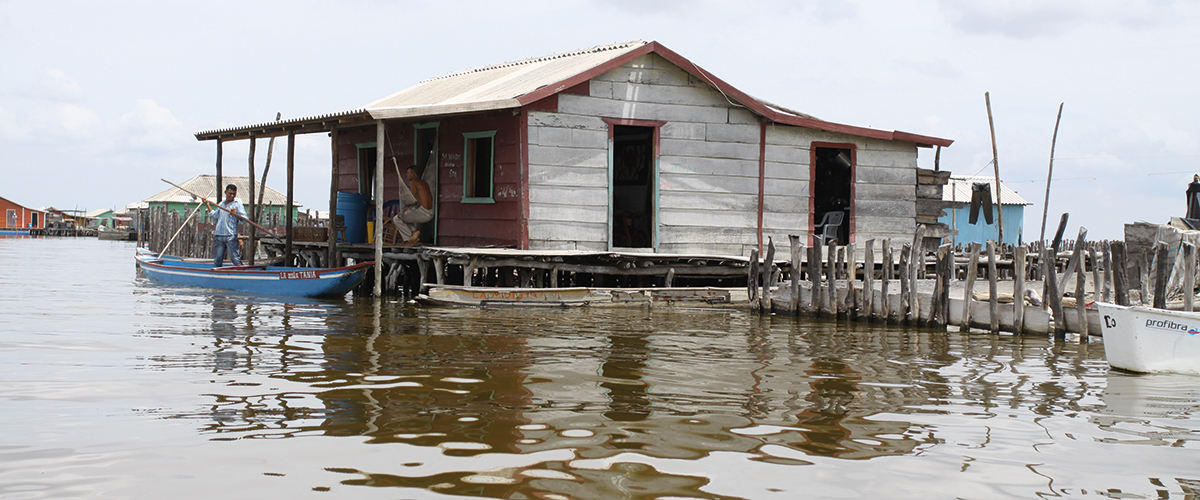
Building resilience along the Colombian Caribbean coast in the face of slow-onset environmental changes and climatic shock events
Primary Investigators: Professor Piran White, Dr Julia Touza (Environment, University of York), Dr Henrice Altink (History, University of York), Professor Jean Grugel, Dr João Nunes (Politics, University of York)
External collaborators: University of Southampton, University of Cambridge, Grupo Laera Colombia
Funder: Global Challenges Research Fund (NERC, ESRC and AHRC)
Resilience is at the heart of the current development agenda and underpins approaches to disaster risk reduction. It has a central role in the 2030 Global Goals. Fundamentally, resilience is about the ability of communities to resist and absorb the impacts of environmental hazards, so they can continue to function as successful societies. The frequency and severity of environmental hazards, such as floods and droughts, are increasing in many lower and middle-income countries, and poor, marginalised ethnic groups and other vulnerable social sectors, including the old and the very young, are particularly vulnerable to such impacts. One important influence on how communities and societies are able to adapt to environmental hazards is how they have developed in the past. Historical context, culture and political dynamics are all important factors affecting resilience and shape how it is locally understood and framed. However, most research on resilience fails to take account of the importance of past events and responses, and the timeframe of studies is a few decades at most.
In this project, we will bring together social, political, cultural and environmental histories to track resilience in a vulnerable tropical coastal community over a 200 year period. The project will focus on communities along Colombia’s Caribbean Sea coast, in particular within the Biosphere Reserve site of Cienaga Grande de Santa Marta (CGSM). The CGSM is Colombia’s largest coastal lagoon system, and supports seven communities, all of which are heavily dependent on fisheries from the lagoon for their livelihoods. The CGSM system is under threat from a wide range of environmental pressures including sea level rise, warming climate and reduced precipitation, which combine to threaten the fisheries. These trends are overlain by impacts from the increased frequency and severity of floods and droughts, linked to weather patterns related to large-scale Pacific Ocean warmings (El Niño events) and coolings (La Niña events).
We will extract detailed environmental histories regarding drought and flood events, pollution and sedimentation rates from cores that we take from the mangrove forests that fringe the CGSM lagoon, plot historical representations of environmental change and identify historical political trends that have shaped resilience in the past. We will date key events such as floods and droughts from these cores and then use historical sources including literature and arts-based works alongside the lens of politics to identify the range of social, political and cultural factors that have affected the response and the extent of resilience of the communities over time. Finally, we will use this information to propose ways in which resilience could be enhanced to protect the communities against future environmental and societal pressures.

